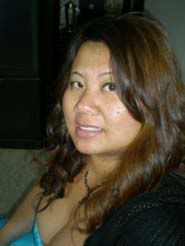Hmong rapidly adapt to US
Thursday, September 10, 2009
By Paula J. Owen CORRESPONDENT
FITCHBURG — Thousands of people from the Hmong population across the country gathered at Saima Park for the Hmong New Year Festival this weekend and to remember the sacrifices the Hmong people made for the United States during the Vietnam War.
The festivals are held all over the United States from August to January on staggering dates to allow Hmong families and vendors to participate in as many as possible.
Local and state officials welcomed Hmong families for the celebration, which was filled with food, music, traditions and family activities.
Speaker Paula P. Yang is CEO and founder of the Hmong Sisterhood in Fresno, Calif., where the largest Hmong New Year celebration is held each year, with over 120,000 people turning out. She explained to the crowd why many Hmong people are in the U.S.
Most people don’t know that the Hmong played a huge role in the Vietnam War, she said, and are refugees from Laos as a result.
“Our people fought against communism on behalf of the United States, defending our country during the Vietnam War, known as the secret war,” she said. “The loss of 60,000 American lives for a no-win war in Vietnam was a tragedy to the huge nation of America, but it was a relatively small percentage of the nation compared to the loss the Hmong people suffered.”
She added that when the U.S. pulled out of the war in 1973, thousands of Hmong were left fighting against communism on their own in Laos.
“By 1975, Laos had fallen completely to communism,” she said, “and the lives of all Hmong people who helped fight the communists were in jeopardy.”
An estimated 100,000 Hmong lives were lost as a result of the war, she said. Today the 350,000 Hmong living in the U.S. celebrate the New Year to help wash away the old and celebrate the new, she said.
Speaker Roger S. Warner, a historian and filmmaker from Ipswich, said the gathering of the young Hmong with the old ones who fought as soldiers and worked as farmers was a display of accelerated culture change.
“I think it’s one of the great stories of rapid culture change in history and it isn’t finished yet,” Mr. Warner said. “Fifty years ago, some Hmong hadn’t seen the wheel and now their grandchildren are walking around with iPods.”
Peter V. Hanks, semiretired from working on space programs at the Massachusetts Institute of Technology, was invited by the United Hmong of Massachusetts, which put on the event.
Mr. Hanks, from Lexington, said he spent years growing up in Laos with his anthropologist parents. He also lived in Thailand for two years, where many Hmong sought refuge during and following the Vietnam War.
He said he attended the festival to take photographs for his mother, Jane R. Hanks, who is 101 and studied tribes in Thailand for 50 years.
“It is nice to see a revival of the culture in America,” Mr. Hanks said. “It has updating and modernness to it, but it’s still quite traditional.
Mayor Lisa A. Wong, the second Asian-American elected mayor in Massachusetts, encouraged children at the festival to pursue higher education. Her family moved to the U.S. from China 40 years ago, Ms. Wong said, and she is proud to be a product of the state’s public school system.
“It’s one of the reasons my parents moved from China, and I want to see more Asians succeed and get involved in politics,” she said.
Mai Ker Vang, 25, from Providence attended the festival with her family.
She is one of nine children ages 16 to 34 still living in the family home. Her parents don’t want her or her siblings to move out until they are married, she said. She is attending college for dance performance and wants to become a physical therapist. Her family tries to attend several Hmong New Year festivals every year, she said.
“People don’t see each other often until the festival,” Ms. Vang explained, donning traditional Hmong dress. “It gets all our friends and family together. Our only holiday that I know of is the New Year.”
Source


0 hlub:
Post a Comment